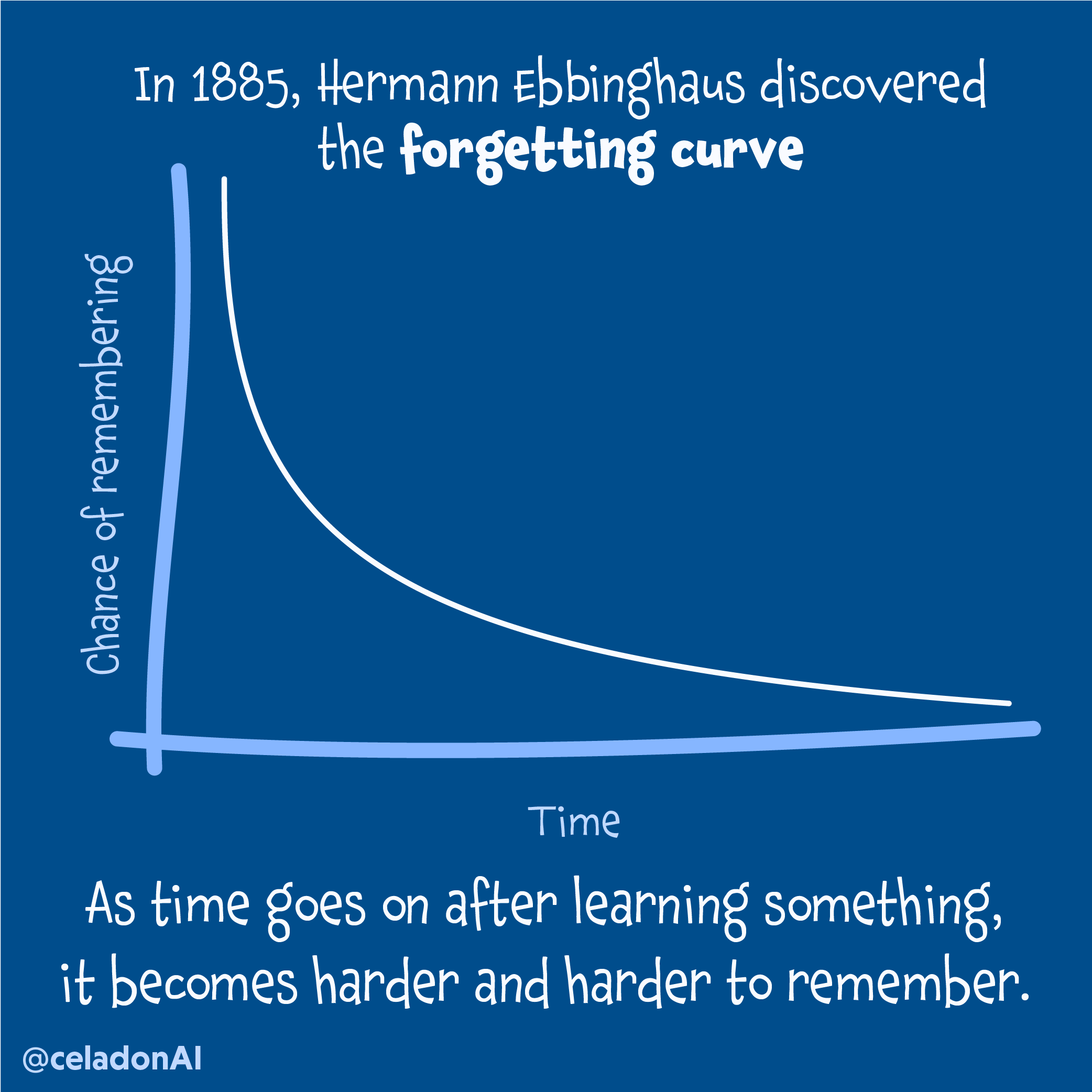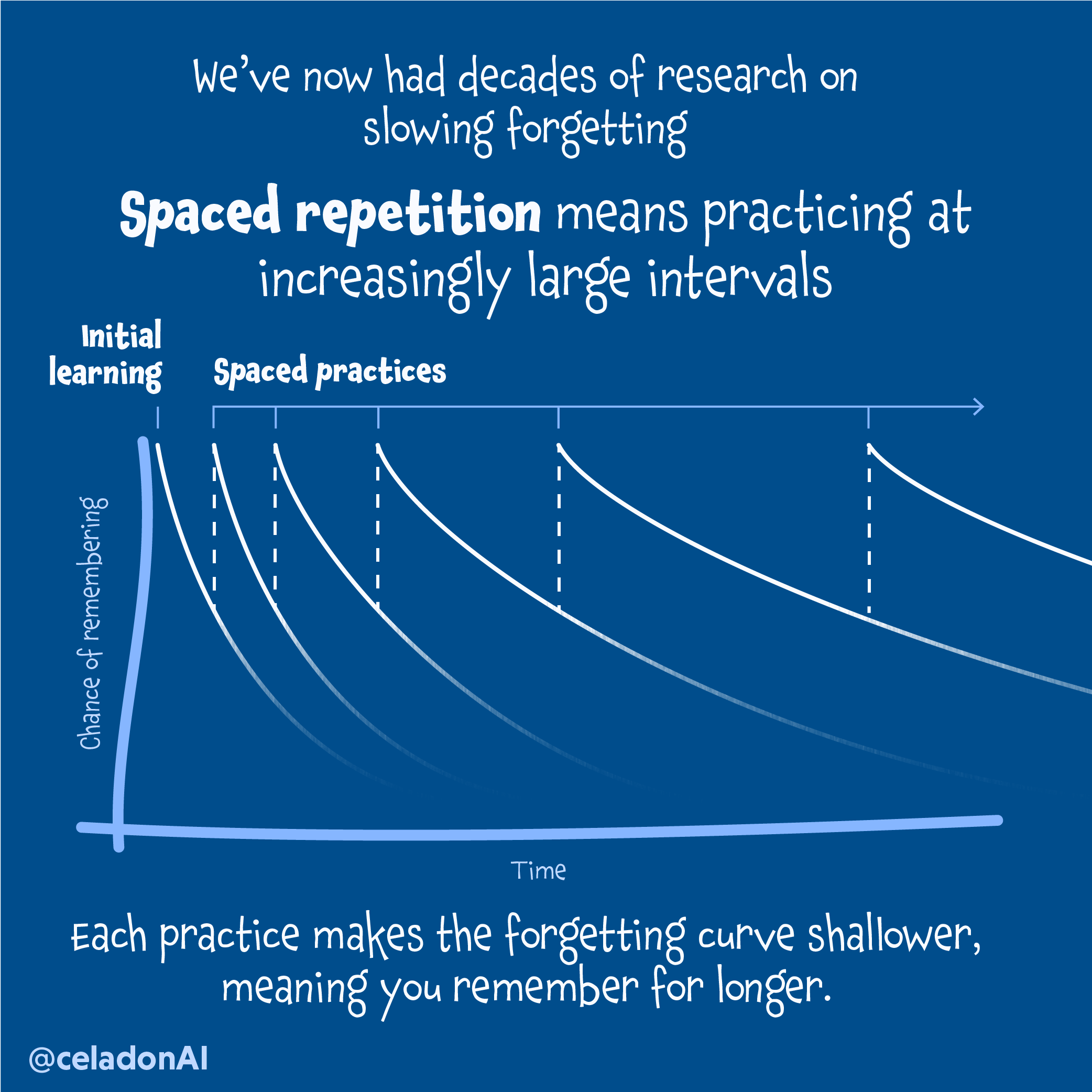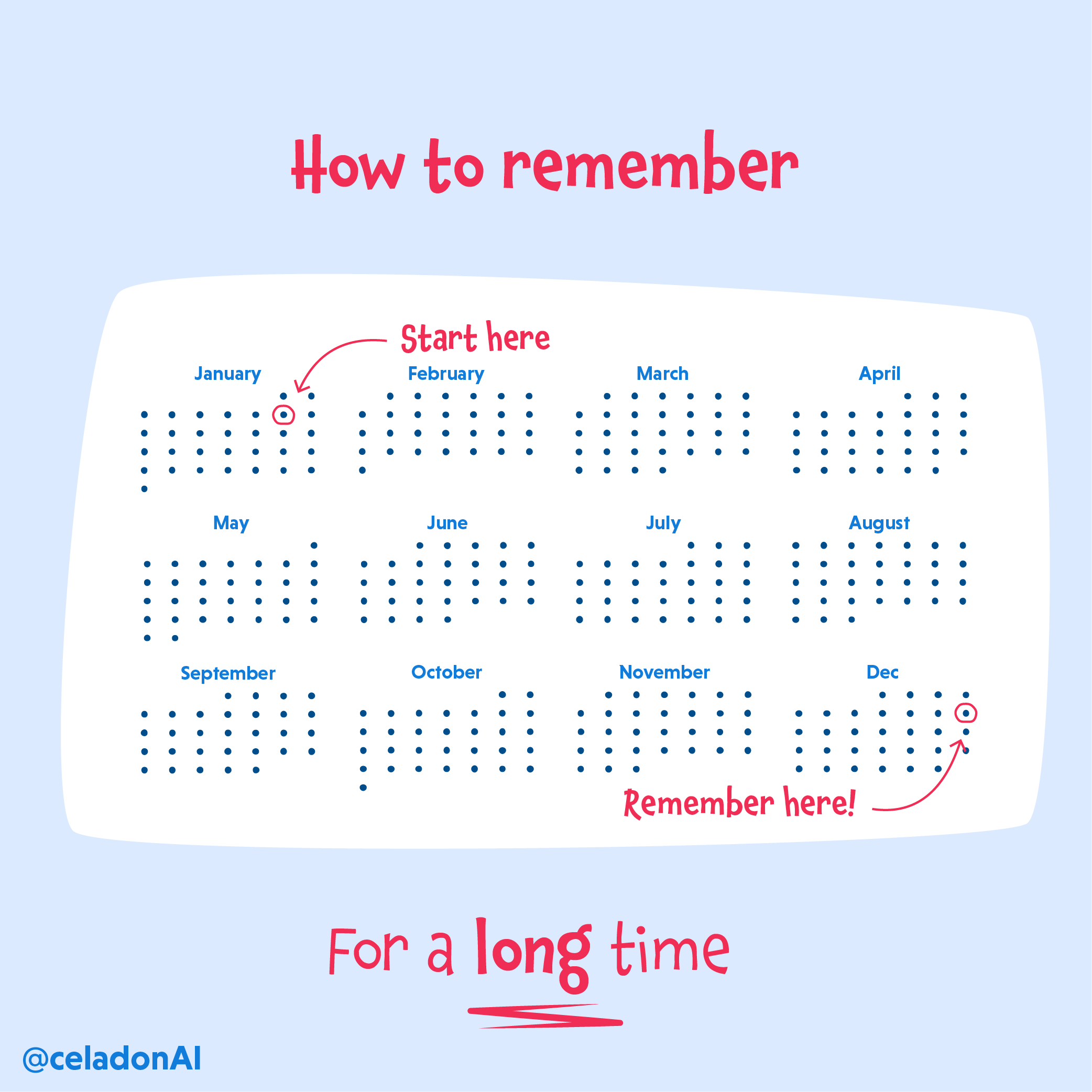When learning or studying, it can be tempting to cram as much content in as short a time as possible. To keep working on one lesson or homework task until you feel like you get it. Have you ever spent hours working on a specific topic, ending the study session feeling like you can recite the whole chapter of the textbook, only to come back to it another day and find it unfamiliar? Unfortunately, learning and memory takes time (time in the sense of weeks and months) and this approach of blocked, intense study sessions will not lead to true long-lasting memory, at least not easily or efficiently.
There are many ways to make learning and memory-efficient though, and the discipline of psychology is deep with evidence-based learning techniques. The one we will be discussing in this post is spaced repetition.
The story of spaced repetition is quite an interesting one. Around 1885, a German psychologist called Hermann Ebbinghaus observed his own loss of information learned over time. He noticed an exponential loss of information, the sharpest decline occurring in the first twenty minutes since learning, and continuing to be significant within the first hour - the forgetting appeared to slow down after one day. He ran multiple tests, trying to evaluate how his memory declined over time and his "research" provided a basis for further psychological study into how memory works.

Now obviously, conducting experiments on one's own memory has major limitations but we now have decades of research to support Ebbinghaus's initial observations. Indeed, memory does decay at this exponential rate but what further, less dubious research has revealed is that perhaps, if we interrupt the decay with recall at the right moments, we can slow the rate of forgetting.

Spaced repetition is one of the most discussed techniques for improving memory retention in psychology, and it really is what it sounds like. Most of us, when we study, will go back to our learning sessions more than once - we repeat the practice. Spaced repetition is about optimising the amount we do that and the time left between practice sessions. We don't want to waste time returning to our study an unnecessary amount, but equally, if we leave it too long between sessions or don't do enough study sessions, it could all be worthless. Spaced repetition is the optimum way to space out practicing so we maximise the chances of remembering information in the long term, and it's based on Ebbinghaus's forgetting curve. Spaced repetition is backed by decades of research and essentially suggests spacing out practices in increasingly long intervals as to interrupt the rate of forgetting.
For example: if you've just gone over doubling and halving with your child, you can come back to it in 10 minutes, then an hour, then a day, then 2 days, then a week, then a month, then in 2 months. This method has a higher likelihood of your child remembering how to double, than spending a few hours working on it once.

Education systems and classes are normally structured in a massed method, meaning that content is studied in-depth, tested and then moves on to the next topic. Research suggests that this isn't conducive to long-term memory at all, and it's very familiar to hear adults sharing how little they remember from high school English class or primary school Maths class.
So, why don't we use spaced repetition methods more in education? Well, as our example above shows, it's pretty difficult to remember and plan to come back to a topic at just the right time. Imagine if you had another 20 topics to return to, each needing its own spacing. Spaced repetition is also something not well taught to students or teachers. It's really only available to those who are looking for it or who study psychology at university. This isn't something we teach in primary school or high school, let alone to teachers. Beyond that, the way the curriculum and classroom functions doesn't really allow for spaced repetition. With so much content to cram in, it would be unrealistic to expect teachers to plan out a whole year's worth of learning into small chunks and then space them out over the perfect intervals for multiple classes!
But, as it is mostly a logistical issue, technology can lend a hand, and that's exactly what we're doing at Celadon. Celadon maps out learned content based on spaced repetition. Planning the perfect time for your child to revisit a topic again and making learning easier from the first use.

